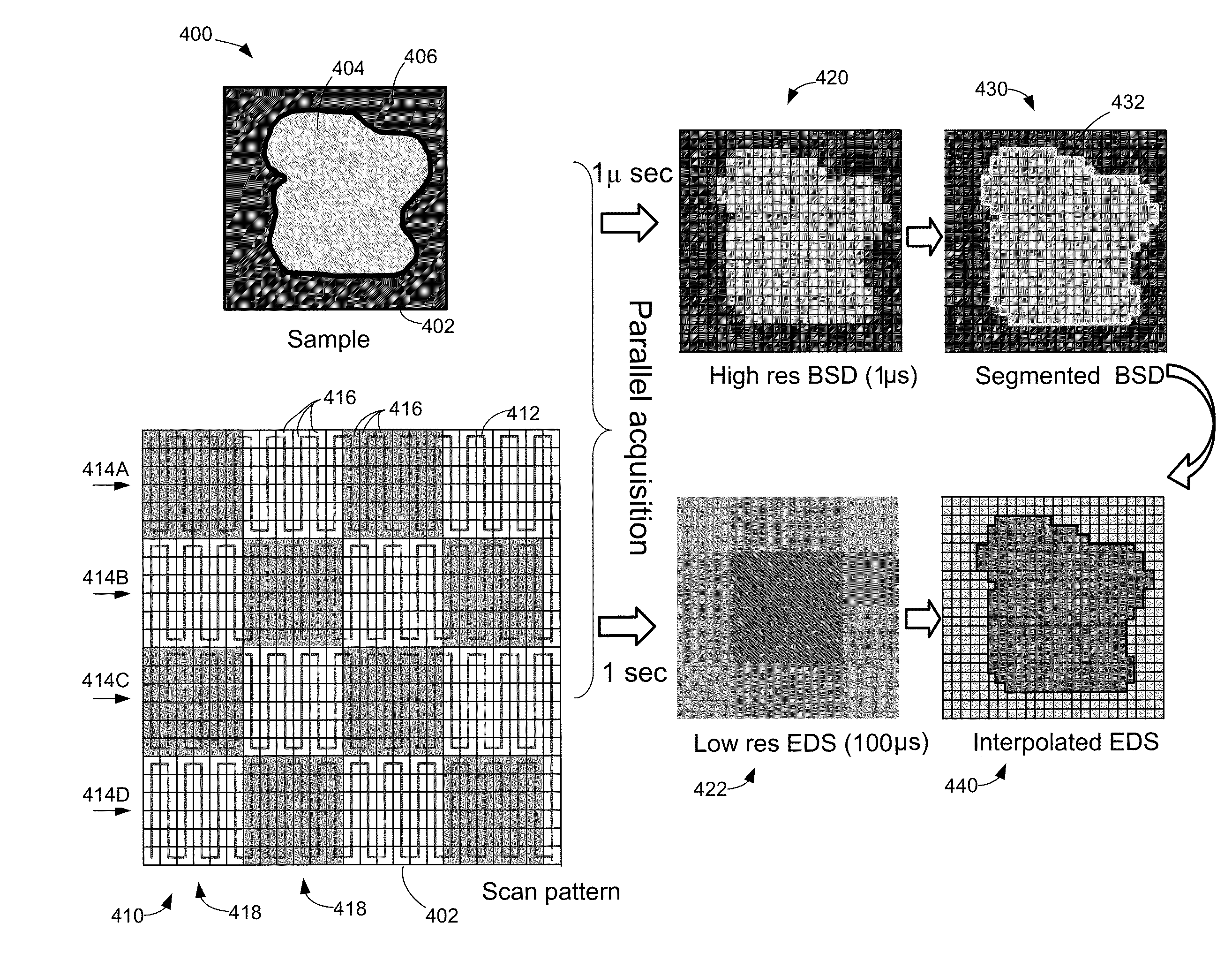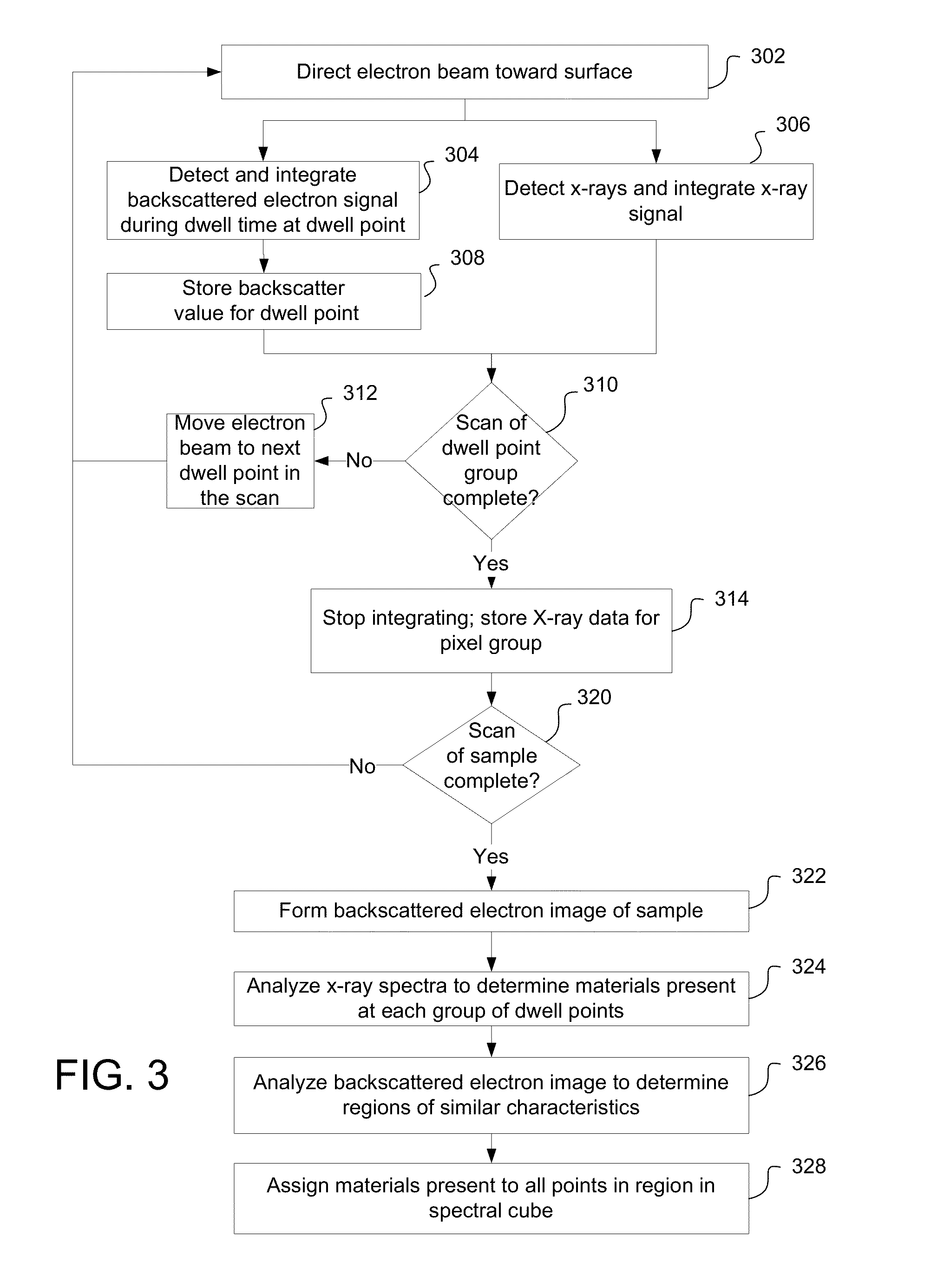Clustering of multi-modal data
a multi-modal data and clustering technology, applied in material analysis using wave/particle radiation, instruments, nuclear engineering, etc., can solve the problems of inability to acquire information about samples in a short time, and the energy measurement of electrons, like any measurement, has an inherent error, so as to achieve the effect of more rapid acquisition of information about samples
- Summary
- Abstract
- Description
- Claims
- Application Information
AI Technical Summary
Benefits of technology
Problems solved by technology
Method used
Image
Examples
Embodiment Construction
[0027]In accordance with a preferred embodiment of the invention, data is combined from different analysis modalities to determine properties of a sample. A beam is typically directed toward a sample surface and emissions generated from the surface by the beam impact are detected. The primary beam can comprise, for example, electrons, ions, photons (e.g., a laser beam or x-rays), or atoms. The beam is typically focused to a point on the sample and the point is scanned across the sample. In some modalities, the beam may be parallel instead of focused and / or stationary instead of being scanned.
[0028]Particles (used herein to include photons and scattered primary particles) that are emitted, backscattered, or transmitted through the sample in response to the primary beam are detected. Different emissions from the sample, such as x-rays, backscattered electrons, secondary electrons, Auger electrons, transmitted electrons, or photons, are detected in various analysis modalities. The inve...
PUM
 Login to View More
Login to View More Abstract
Description
Claims
Application Information
 Login to View More
Login to View More - R&D
- Intellectual Property
- Life Sciences
- Materials
- Tech Scout
- Unparalleled Data Quality
- Higher Quality Content
- 60% Fewer Hallucinations
Browse by: Latest US Patents, China's latest patents, Technical Efficacy Thesaurus, Application Domain, Technology Topic, Popular Technical Reports.
© 2025 PatSnap. All rights reserved.Legal|Privacy policy|Modern Slavery Act Transparency Statement|Sitemap|About US| Contact US: help@patsnap.com



